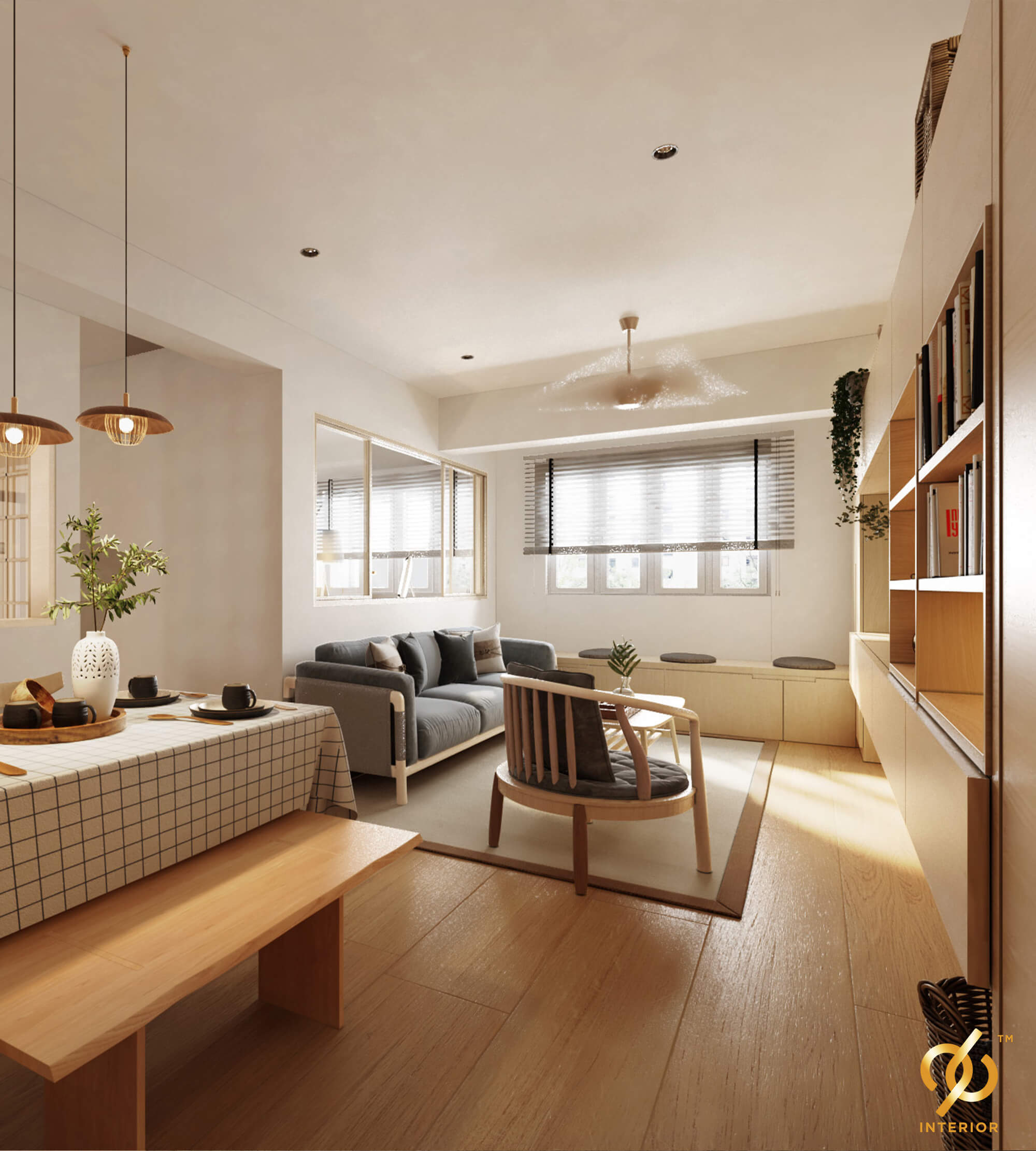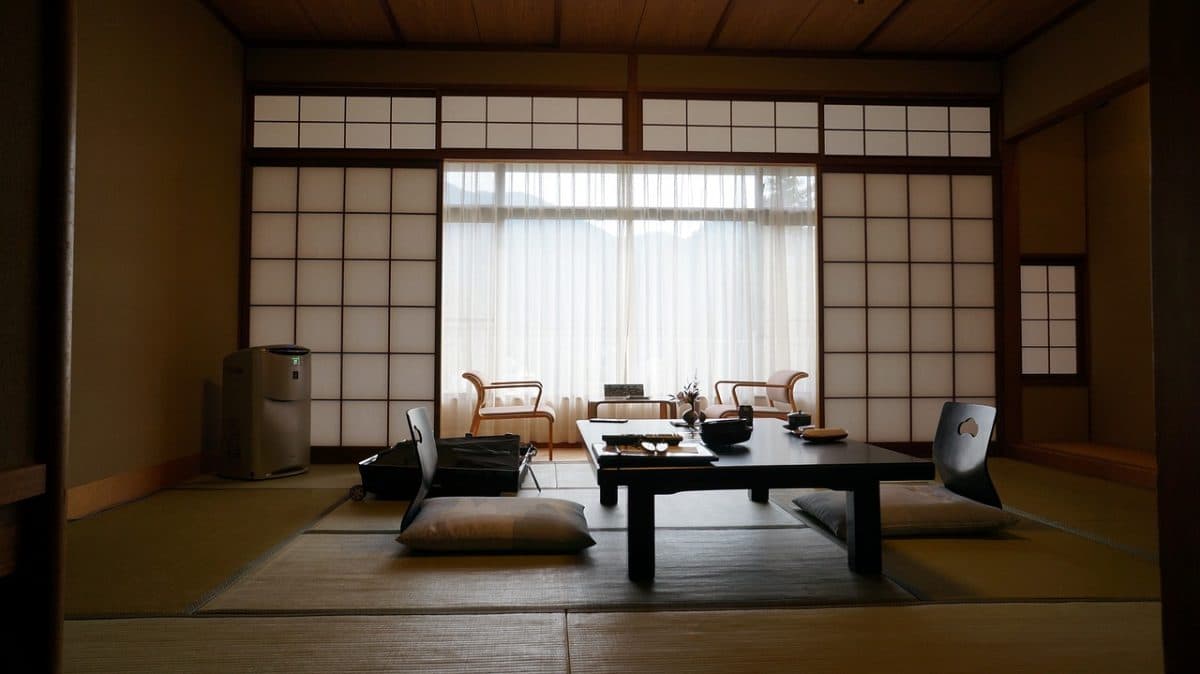Ten Tokyo apartments with minimalist interior designs
Table Of Content

To get the best of both worlds, draw on the coziness of Scandi design with warm textures and soft pieces while maintaining the elegance of Japanese decor. While both styles have a focus on the utilitarian, it's important to maintain a Zen-like sense of calm in your space. With Japandi style, there is "an emphasis on creating a cozy atmosphere," Adi says. Now, fuse that idea with the Japanese notion of "wabi-sabi," or the idea that there is beauty in imperfection, and you create the design marriage that is Japandi. Japanese and Scandinavian design styles work so well together because they are both rooted in minimalism and comfort. The shared aesthetics of the two come together to create a style that is both easygoing and sophisticated.
Fusion of Tradition and Modernity
Local studio FrontOfficeTokyo stripped the apartment down to a single room, which features designated zones to lounge, cook, eat and sleep. Almost all of the walls within this 50-square-metre flat were replaced with multi-functional box units and sliding partitions to make the space feel bigger and brighter. The Life concept apartment is an understated residence set within a 1980s building by Tokyo design firm I IN.
What are the main principles of Japanese interior design?

Few design and decor trends capture the imagination quite like Japandi interior design. This unique style is a blend of Japanese and Scandinavian aesthetics, merging the minimalistic elegance of the East with the cozy warmth of the North. Japandi-style interior design offers a blend of tranquility, simplicity, and functionality. To better understand the essentials of Japandi style, its origins and philosophy are just as important as its calming color palettes and natural materials. It is also essential to focus on quality when selecting furniture for a Japanese-inspired interior design.
Natural Elements
In traditional Japanese interiors, "the walls are white or light beige-toned plaster," Kaneko says. Benjamin Moore's Chantilly Lace or Snowfall White, as well as "a little textured Japanese plaster." When color does appear, it is inspired by nature and often displays a subtle gradation, Ashizawa explains. After that, she says it’s up to the person regarding how much of each individual style gets included in the final look. “You can choose if you like your place a bit more Scandinavian or Japanese,” she says.
What Type of Flooring Requires the Least Maintenance?
Keeping décor and furniture simple and minimalistic, Japanese homes are rarely a place of clutter. Clearly, these can be any and all types of house plant and there is an abundance from which to choose. Some people may stick to the simplicity of a few spider plants for the easy maintenance. Elevated from a mere thought process to an essential part of everyday existence, aesthetics in Japan is considered a way of life.
Apartment with a Library
In an era defined by constant noise and clutter, there exists a longing for simplicity, tranquility, and harmony within our living spaces. The fusion of two distinct yet complementary design philosophies – Japanese and Scandinavian – has given rise to a captivating aesthetic that resonates with those seeking balance and serenity in their homes. In this guide, we will unravel the essence of this captivating trend, exploring its core principles, key elements, and practical application in interior design. With a focus on simplicity, functionality, and the celebration of natural materials, Japandi style transcends mere aesthetics to become a way of life. Embodying the essence of tranquility and simplicity, Zen minimalism in modern Japanese interior design offers a serene escape from the chaos of everyday life. This design philosophy focuses on creating spaces that are clutter-free, harmonious, and functional.
Incorporating Classic Halloween Symbols
Despite these considerations, its affordability, relative durability, and resistance to humidity make engineered wood a popular choice for those seeking a balance between cost-effectiveness and quality in their flooring. Engineered wood is constructed with a top layer of real wood veneer over plywood, enhancing its stability in humid environments compared to solid hardwood. While engineered wood can be sanded and refinished to a certain extent, it falls short of the refinishing capabilities of solid hardwood. Navigate the realm of flooring options to discover the most durable and low-maintenance types—uncover the ultimate solution that starts with the letter 'N'.
"It's such a beautiful culture," Ashizawa says, referencing the gardens and their timeless beauty. "I just like the really minimalist style," says Amelia, a woman in her 40s who lives along the coast near Sydney. She learned about Japandi on TV last year and decided to adopt the style for her home's interior, having purchased about 20 such products so far. Danielle Demetriou is a British writer and editor who moved from London to Japan in 2007. She writes about design, architecture and culture (for newspapers, magazines and books) and lives in an old machiya townhouse in Kyoto. Other new pieces included the MT Coffee Table, with its rectangular, softly curved surface and steel legs.
Akio Isshiki Architects refreshes House in Hattori-Tenjin with playful void
Perhaps more so than any other culture, the Japanese believe the home should radiate natural beauty, giving its residents a tranquil, zen escape from the fast-paced world outside its front door. And you can achieve that same authentic, calming atmosphere in your home by incorporating characteristics of modern Japanese interior design throughout your space. Whether you’re building, remodeling, or designing your home, it’s never too late to dive into this simply beautiful aesthetic.
Graced by bespoke furniture items by Karimoku and with an interior design concept by Keiji Ashizawa Design and ... - Global Design News
Graced by bespoke furniture items by Karimoku and with an interior design concept by Keiji Ashizawa Design and ....
Posted: Fri, 26 May 2023 07:37:23 GMT [source]
With a focus on lightness and translucency, the study area features light-emitting ceiling films and curved elements. For the design, One House, led by Fang Lei, combines modernism, avant-garde, and inclusiveness to create an environment that balances daily routines with future possibilities, enhancing the connection between work and life. Japanese interior design is looked at with a practical eye, with storage being the main theme.
We’ve already talked about the many virtues of the Adjustable Height table, but if you want a softer spot to kick up your feet, grab a storage ottoman. They are easy to find, highly customizable, and come in a large variety of shapes and sizes. That kind of unit is difficult to find in most western countries, but Ikea has several modular systems that can be customized to be used this way. Coffee table by day, dining table or gaming table by night, space saving, and great looking, you can’t beat this transforming feat of engineering. They come in just about every style and shape, so there is sure to be on that you love. Even if you have the space for a separate dining room, an Adjustable Height table is great for when you want to work on your laptop without having it in your lap or if you want to put together a puzzle while watching T.V.
One of the bedrooms in a Japandi-style home Wijaya designed features closet doors inspired by Japanese landscape paintings. Based in Kyoto, Fhams is an incredible design team that have worked on a wide range of project types and scales such as interior design, hotels and retail shops. The design company founded by Ryotaro Ando in 2000, proposes designs by considering various aspects, both contextual conditions, and legal conditions, context, climate, and concerns. Wooden panelling creates "corners, blind spots and niches" in J House – a pared-back apartment renovated to maximise restricted floor space for a growing family. An open-plan living space contains a kitchen, living room and bedroom characterised by reeded glass partitions, stucco walls and luxurious red walnut joinery.
Choosing the right witchy welcome mat can truly elevate your door decor, giving it that extra Halloween charm. Whether you prefer a classic cauldron design or a more whimsical broomstick pattern, these mats are sure to impress your visitors and get them in the Halloween spirit from the moment they arrive. To create a truly immersive experience, consider adding a fog machine to envelop your entryway in an eerie mist, setting the stage for a hair-raising encounter.
A low-sitting armchair and a large table with a kettle on it will make the setup even more authentic. As you can see, there isn’t that much decoration going on in this bedroom except for a couple of scrolls and a sword. Another route is thrifting or consigning authentic Asian pieces such as ceramics, paintings, and vases at antique stores, online marketplaces, and flea markets. This allows you to add more curated worldly items while maintaining a more sustainable interior design aesthetic – which is very important in Japanese design principles. This sentiment is reflected in Japanese design’s minimalist aesthetic that helps to create harmony by removing clutter from a room and allowing for greater focus on individual items or objects within the space. A triangular white lamp and small sculptural side table are a fun addition to the room, which also features a weathered wooden floor and walls where the peeling paint has become a decorative feature in itself.
The sequence is very common in Japanese residential architecture and was emulated by Frank Lloyd Wright in his American home designs. Designers who take a modern Japanese approach choose simple furniture, typically built from wood, with straight, clean lines, only throwing in curved edges here and there to soften and relax the look. They also value low furniture for comfort and to give the space a more open, airy feel. Below, we’ll take you through the primary features of modern Japanese interior design before divulging ways to create relaxing spaces by pulling inspiration from this heavily praised design style. Shinto and wabi-sabi provide a strong foundation for modern Japanese interior designs. While the Shinto belief system revolves around kami (“spirits”) which inhabit all living and non-living things, wabi-sabi refers to the beauty of imperfection and impermanence.
Comments
Post a Comment